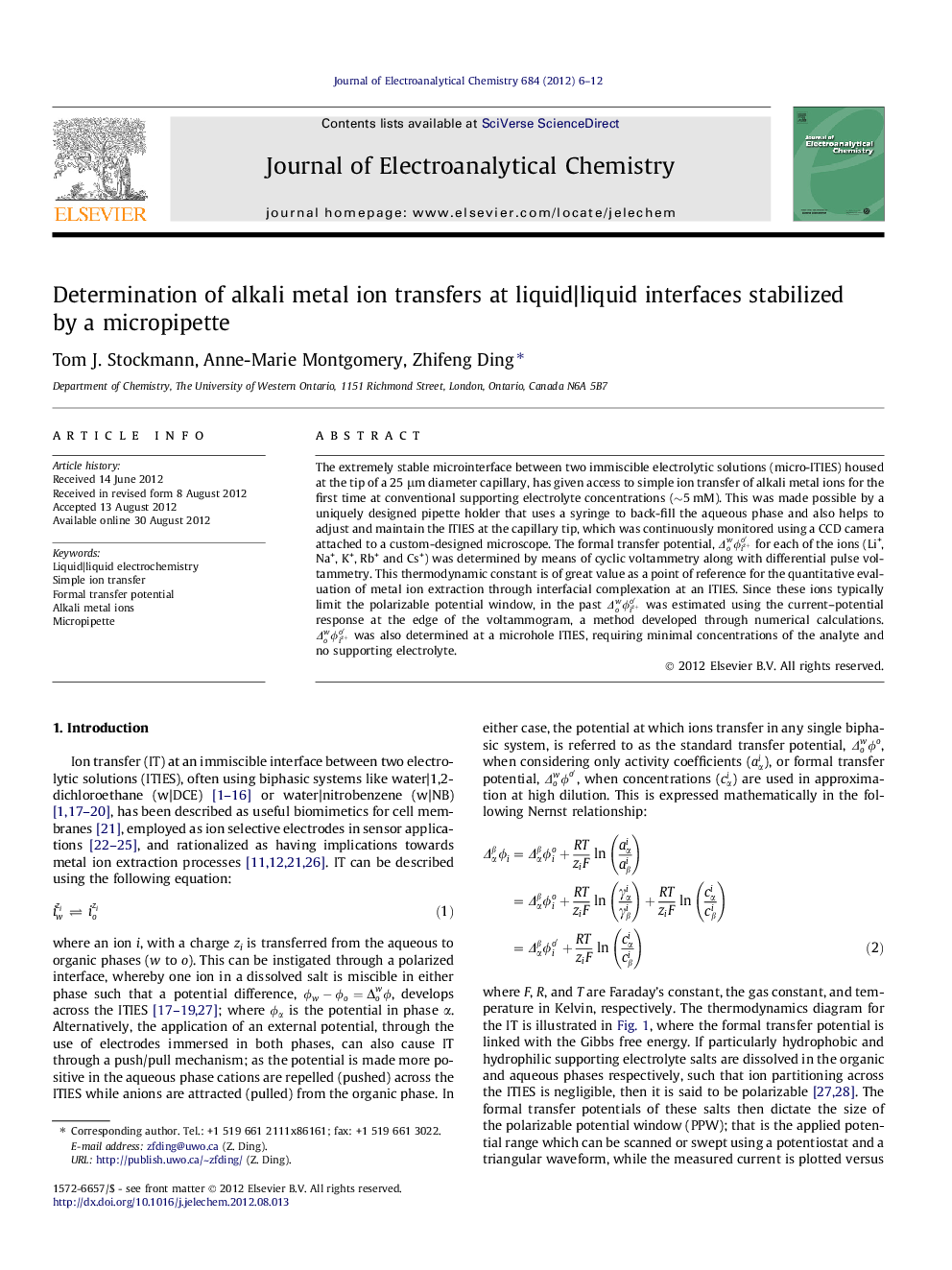| Article ID | Journal | Published Year | Pages | File Type |
|---|---|---|---|---|
| 219249 | Journal of Electroanalytical Chemistry | 2012 | 7 Pages |
The extremely stable microinterface between two immiscible electrolytic solutions (micro-ITIES) housed at the tip of a 25 μm diameter capillary, has given access to simple ion transfer of alkali metal ions for the first time at conventional supporting electrolyte concentrations (∼5 mM). This was made possible by a uniquely designed pipette holder that uses a syringe to back-fill the aqueous phase and also helps to adjust and maintain the ITIES at the capillary tip, which was continuously monitored using a CCD camera attached to a custom-designed microscope. The formal transfer potential, Δowϕiz+o′ for each of the ions (Li+, Na+, K+, Rb+ and Cs+) was determined by means of cyclic voltammetry along with differential pulse voltammetry. This thermodynamic constant is of great value as a point of reference for the quantitative evaluation of metal ion extraction through interfacial complexation at an ITIES. Since these ions typically limit the polarizable potential window, in the past Δowϕiz+o′ was estimated using the current–potential response at the edge of the voltammogram, a method developed through numerical calculations. Δowϕiz+o′ was also determined at a microhole ITIES, requiring minimal concentrations of the analyte and no supporting electrolyte.
► Uniquely designed micropipette set improves stability of liquid/liquid interfaces. ► Stable microinterfaces allow us to extend the limit of the PPW. ► Δowϕo′ of alkali ions was determined without the need for minimal electrolyte concentrations. ► Evidence is given towards ion–ion interaction influencing formal transfer potentials.
